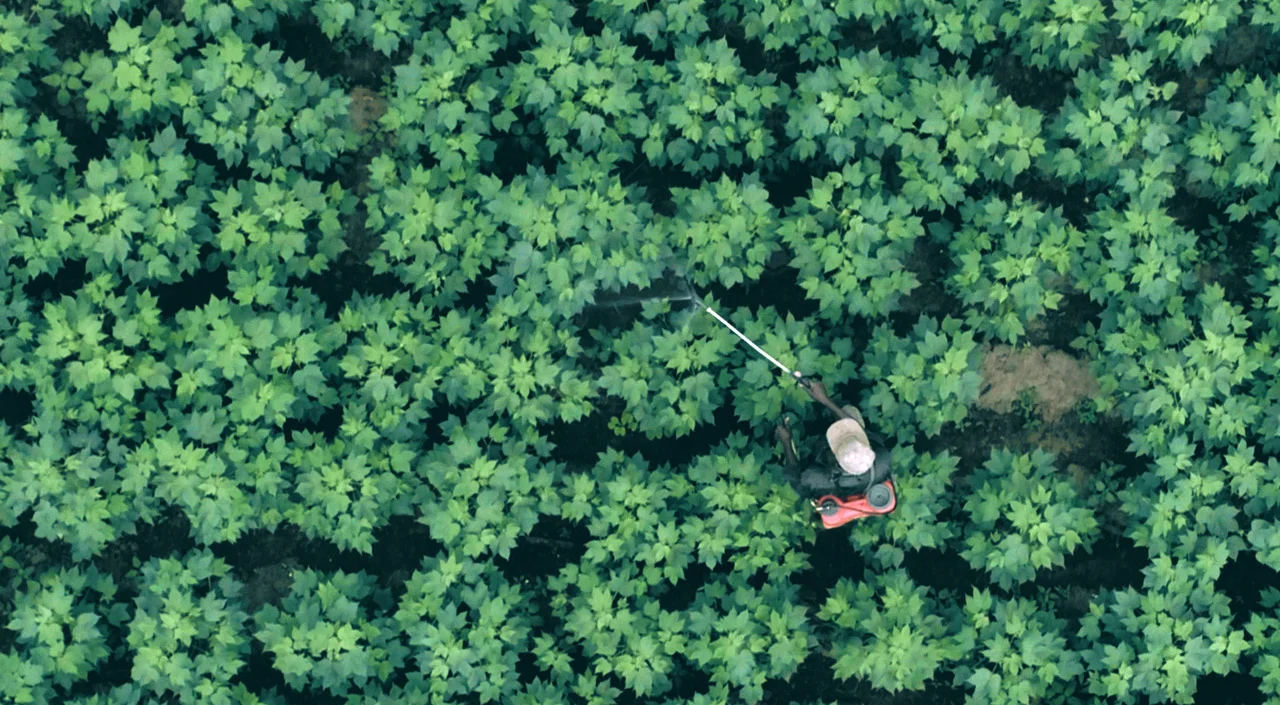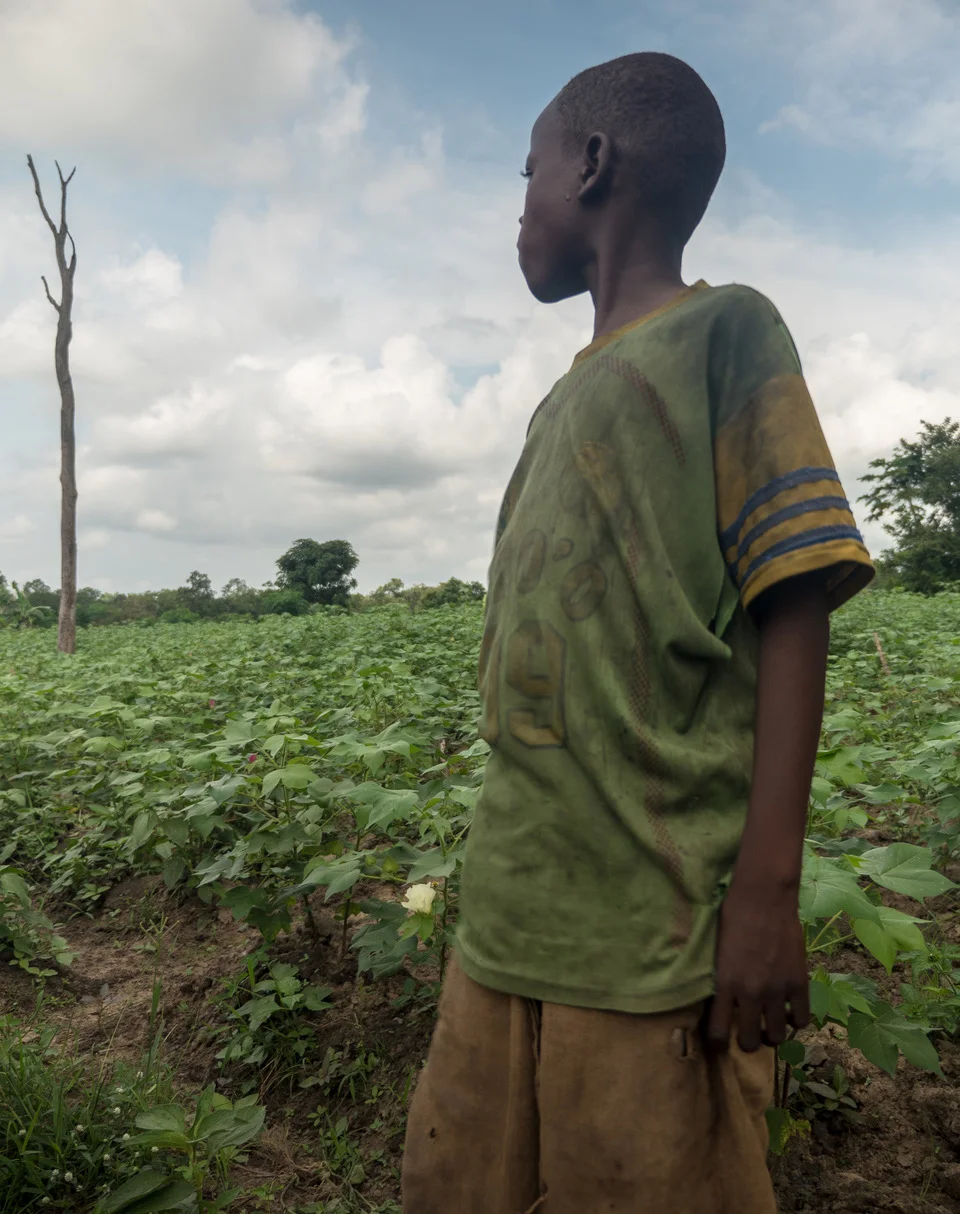Who’s Dying to Clothe You?
“People are getting sick, working and dying in atrocious conditions.” Dying to Clothe You aims to wake viewers to the realities of the cotton industry and beyond.
By BEL JACOBS
At this week’s Environmental Audit Committee’s evidence hearing at the Victoria and Albert Museum, in front of a packed house, high-profile speakers including Livia Firth, journalist Lucy Siegle, Claire Bergkamp, Sustainability & Innovation Director, Stella McCartney Ltd and Professor Dilys Williams, Director and Professor of Fashion Design for Sustainability, spoke passionately about the need to create new fashion systems that put people, animals and planet at their heart.
A new film about the fashion industry looks set to deepen the conversation. Dying to Clothe You, by Boatstreet Films, makes clear how much the industry needs to do, to become more sustainable and to end the exploitation of workers all along the supply chain. It starts with fashion’s most widely used natural raw ingredient: cotton. A gross sixty per cent of women’s clothing items contain cotton fibres – and yet, its production in countries far away is tragically problematic, enormously draining and polluting on water sources, hugely reliant on dangerous pesticides that are killing the farmers. A quarter of all pesticide use on the planet is sprayed on cotton.
A collaboration between director Mark Greenwood-Whiteley, executive producer Justin Cox and a team of committed passionate filmmakers, Dying to Clothe You speaks to the farmers who risk their health – and their children’s health – on a daily basis to grow cotton for Western throwaway fashion. The film’s ultimate aim is not simply to ‘wake people up’ to the issues captured in their clothing but also – because this is an age where we can no longer pretend everything is ok – to provide viewers with real answers. As the film begins pre-production, I speak to Mark and Justin about its making and the conversations they hope it will inspire.
“Fast fashion is destroying the planet, eco-systems and sapping natural resources in a wholly unsustainable way.” Picture: Dying to Clothe You.
What do you hope Dying to Clothe You will help viewers understand about the fashion industry?
Justin: That it is more than skin deep, that there is a human cost to the fast fashion business model. People are getting sick, working and dying in atrocious conditions. Also, the broader environmental impact of the industry – the loss of water supplies to millions of people across Asia due to rivers becoming so toxic that they can’t even sustain life. The West is exploiting the developing world so comprehensively that it is creating a level of existence in those countries that we should be ashamed of. Fast fashion must slow down; the business model is destroying the planet, eco-systems and sapping natural resources in a wholly unsustainable way. People need to stop and re-think how they buy their clothes. Is it want or need, new or nearly-new?
Mark: We plan to show how we can all do our bit. Positive change is coming.
Can you say more about the techniques and concepts you employ in the film to communicate these stories?
Mark: I can’t give away too much but we’ll be using state-of-the-art cinema cameras and technology to bring to life the forgotten people of the fashion industry, the environmental destruction as well as the vibrancy of the planet and the wonderful people creating change. It will be immersive, expansive and emotional.
“In 2018, a five hour flight away from some of the wealthiest cities on earth, people are living hand-to-mouth in mud huts with no running water, no sanitation, no electricity and cooking on an open fire.” Picture: Dying to Clothe You.
What lasting memories did you take away from your trip to the cotton fields?
Justin: Just how vulnerable we felt in the proximity of a farmer using conventional pesticides. We could taste it in the air and we felt really uncomfortable, yet the farmer was spraying it without protection, no doubt inhaling it and getting it on his clothes. He had a young family and we knew that his work practice had the potential to reduce his life span. It was heartbreaking. Being a father myself, it was all the more hard to witness.
Mark: In 2018, a five hour flight away from some of the wealthiest cities on earth, people are living hand-to-mouth in mud huts with no running water, no sanitation, no electricity and cooking on an open fire. But [I also remember how] friendly and accommodating the poorest on our planet always are.
What were the greatest challenges you faced making the film?
Justin: The environment and transportation. Africa is a hot, sweat-inducing place to film. Hulking equipment across fields, lugging bags of kit on your shoulder whilst on the back of a motorbike between cotton fields is quite an experience! In the bush, there were gullies and troughs we had to negotiate via 4×4 that made for fraught journeys. It was pretty uncomfortable with jolts and banging of limbs. Once, our road was blocked by huge broken down 1950’s trucks. Luckily, locals showed us an alternate route.
You emphasise alternatives to conventional fashion, which are key to giving power back to the people making purchasing decisions. How much hope do those solutions give you?
Justin: The development of alternative materials that will replace such widely accepted materials as leather and silk is extraordinary, but is also some way from becoming available from a mass production basis – it’s about scalability. That they are in existence is fantastic, however. What we would encourage people to do is buy organic cotton, where the farmers of such cotton don’t risk their health by using toxic pesticides. Alternatively, buy from charity shops, the most ethical way you can buy clothes. You’d be surprised how good you can look for less than a hundred bucks, and I’m talking about a complete outfit!
Conventionally grown cotton is heavily reliant on dangerous pesticides and yet it goes into 60 per cent of women’s clothes.
Mark: There are many what I call ‘fashion heroes’ working to create positive change; we will highlight some remarkable ones in the film.
The world appears to be in a terrible state. What gives you hope in general?
Justin: It’s fair to say that society is being more progressive in its outlook, and wishes to know more about where things come from. [At the moment], it is very much the educated sections of society, those that have been through Higher Education, but as a whole, there is growing curiosity, and that can only be a good thing. Crucially though, there are movements creating greater awareness of the wrongs of big business, and organisations that are investing in how to make the industry more sustainable. Collectively, these forces for good will transform the industry.
Mark: There are many issues that we are discovering almost weekly through wonderful conscious people who dedicate their lives to improving conditions and stopping environmental destruction. It’s now an unstoppable force [and it’s] getting bigger by the day. There is great hope as the newer generations get it!
What is the one thing people should do if they want to help the planet?
Justin: Ultimately, consume less, but when you do need an item of clothing, check out your local charity shop or find an online second hand clothing line, you’ll be amazed by the results!
Mark: Look at your comfortable lives and see what destructive human and environmental practices they have unknowingly been contributing to …and then change!!



